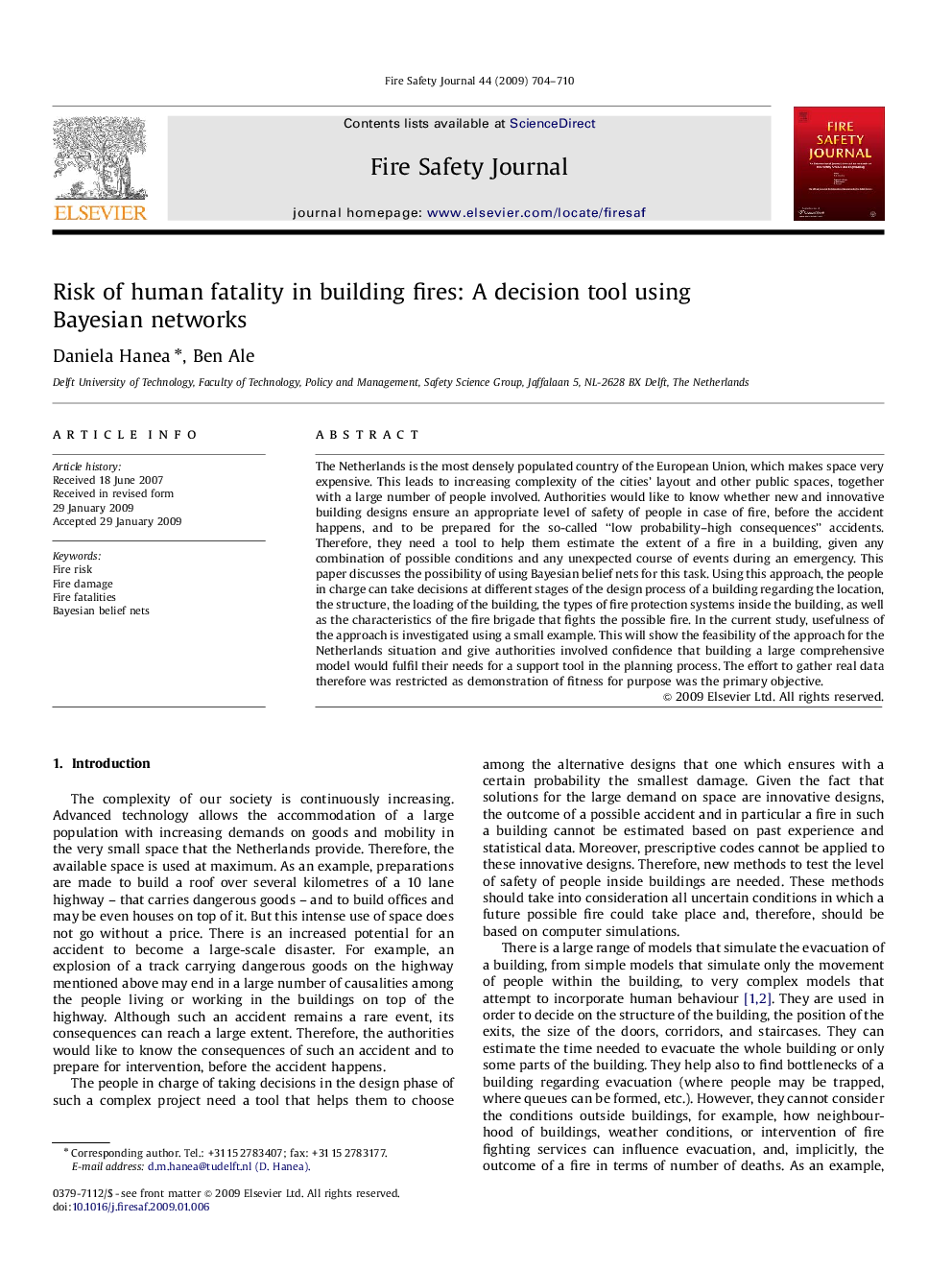| کد مقاله | کد نشریه | سال انتشار | مقاله انگلیسی | نسخه تمام متن |
|---|---|---|---|---|
| 270361 | 504751 | 2009 | 7 صفحه PDF | دانلود رایگان |

The Netherlands is the most densely populated country of the European Union, which makes space very expensive. This leads to increasing complexity of the cities’ layout and other public spaces, together with a large number of people involved. Authorities would like to know whether new and innovative building designs ensure an appropriate level of safety of people in case of fire, before the accident happens, and to be prepared for the so-called “low probability–high consequences” accidents. Therefore, they need a tool to help them estimate the extent of a fire in a building, given any combination of possible conditions and any unexpected course of events during an emergency. This paper discusses the possibility of using Bayesian belief nets for this task. Using this approach, the people in charge can take decisions at different stages of the design process of a building regarding the location, the structure, the loading of the building, the types of fire protection systems inside the building, as well as the characteristics of the fire brigade that fights the possible fire. In the current study, usefulness of the approach is investigated using a small example. This will show the feasibility of the approach for the Netherlands situation and give authorities involved confidence that building a large comprehensive model would fulfil their needs for a support tool in the planning process. The effort to gather real data therefore was restricted as demonstration of fitness for purpose was the primary objective.
Journal: Fire Safety Journal - Volume 44, Issue 5, July 2009, Pages 704–710